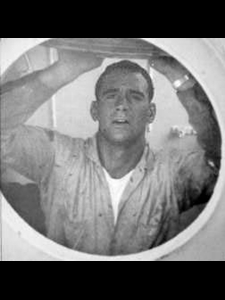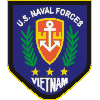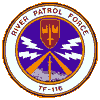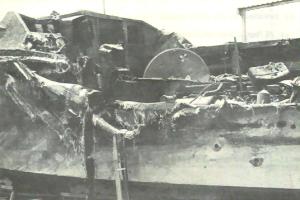|
07 Apr 2007
|
In May 1968, the VC started another campaign which some labeled as a "Mini Tet." For the most part, they were unsuccessful in causing the problems they had in January and most of what we experienced was sporadic increases in action along the rivers. We again had patrols on the upper Bassac. On 5 May, one of them encountered an ambush, which resulted in the near-total destruction of PBR-130 and the loss of Lieutenant Carl Kollmeyer and EM3 Ronald Saporitoa. Carl, the OIC of RIVSEC 511, was a well liked, highly respected person, who was wise to the ways of the river. Unfortunately, for some reason or another, that day he did not follow a basic rule: always have a cover boat. Two 75mm recoilless rifle rounds hit the 130. I went to Chau Doc as soon as we learned what had happened.
The 130's survivors and Carl's body were at Camp Arnn when I arrived. The senior Navy man when I arrived was Lieutenant O'Brien. I knew Obie as we were both from Binh Thuy. He and the others appeared to be in a state of shock about Carl's death. I could not blame them as I had similar feelings. We talked for a while and I hoped it might have helped him in some way. While we were talking, a soldier approached us and said they needed someone to identify Carl's body to finalize the preparations prior to sending it to a mortuary unit. I started to get up, but Obie said, no, he would do it. When he returned, we talked until it was time for me to get in the helo and return to Binh Thuy. Obie later married a civilian nurse named Maggie who had been in Chau Doc during Tet. Binh Thuy dispatched an LCM to bring the 130's hulk back to Binh Thuy. It was in bad shape, floating with only the bow sticking out of the water. However, after a 60-mile trip lashed to the side of an LCM, and then unceremoniously dumped on the riprap at Binh Thuy, it looked as if it was ready for a scrap heap.
Before that time, the standard procedure required sending PBRs requiring extensive repairs to the Ship Repair Facility at Subic Bay, in the Philippines. Although they made the repairs, the incountry forces were not satisfied with the quality of work done there. As NAVSUPPACT Binh Thuy had the repair materials and hull molds, they asked for and got the task of rebuilding the 130. It took several months of long, tedious work, amply supplemented by pride to complete the task. At last, PBR-130, bearing the name USS BINH THUY on its transom, was ready to return to service. The finished product was a thing of beauty, and PBR-130 returned to the river, however without the name on the transom. NAVSUPPACT Det Binh Thuy did a fantastic job restoring the 130. From that point onward, NAVSUPPACT Binh Thuy undertook all major repairs.
From
Memories
by Tom Glickman
|
From his brother,
Joseph R. Saporito
jrsaporito61@hotmail.com
|





